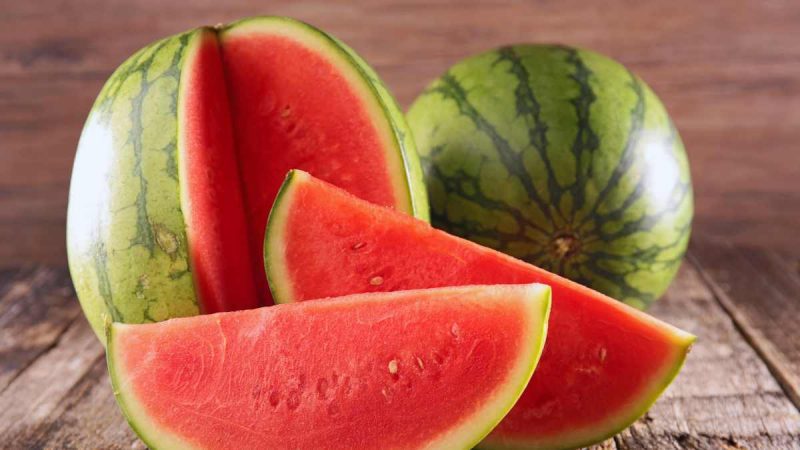As some parts of India are lashed with heavy rains, and others by the scorching sun, both the mango and watermelon seasons are in full bloom. And if your taste buds are swaying between the two fruits, then let’s help you identify a chemical-free watermelon. With fruits being falsely sold as ‘organic’ by vendors, it’s important to know how you can identify a ripe, chemical-free fruit. Watermelon, in this instance.
Dietitian Shows How To Pick A Ripe Watermelon
An Instagram reel by dietitian Sonia Narang has her standing next to a whiteboard to explain how to choose the right watermelon when grocery shopping. Firstly, she asks customers to choose a round-shaped one as they have a higher sugar concentration and water content as well. The evenly distributed sugar helps the fruit ripen easily.
Next, watermelons with yellow instead of white patches are preferable. This indicates that the fruit rested on the ground for longer and had more time to develop sugars. White patches on the watermelon mean it was picked before it was ripe. Next, Narang asks customers to choose a watermelon that has lines close to each other instead of far apart. The closer lines indicate the fruit to be mature. After all, the lines reflect the fruit’s vascular structure or how it can transport water and nutrients across its body.
Also Read: Watermelon & Salt, Green Tea & Lemon, Fitness Coach Shares Simple Yet Healthier Food Combinations
FSSAI Recommends A Test To Avoid Chemically Ripened Fruit
Now, that you know how to choose a nice ripe watermelon, the next question arises: how can you avoid picking a chemically ripened one? For this, a video by the Food Safety and Standards Authority of India (FSSAI) on its official YouTube channel would do the trick. In an informative video, FSSAI shares an adulteration test with its users.
Also Read: Don’t Throw Away Watermelon Rind & Make This Spicy Chutney Instead!
To know if your watermelon has been chemically ripened with Erythrosine colour, first you need to cut the fruit into two halves. Then, take a cotton ball and dab it on the inner succulent part of the fruit. If the cotton ball’s colour remains unchanged, it means the watermelon is unadulterated. And if the cotton ball turns red or changes colour, it means it has been chemically ripened. When choosing a watermelon, avoid pale and shiny ones. Choose a fruit that is dark and matte in colour.
So, have you learnt to pick ripe chemical-free watermelon?
Cover Image Courtesy: Canva Pro/margouiallatphotos

